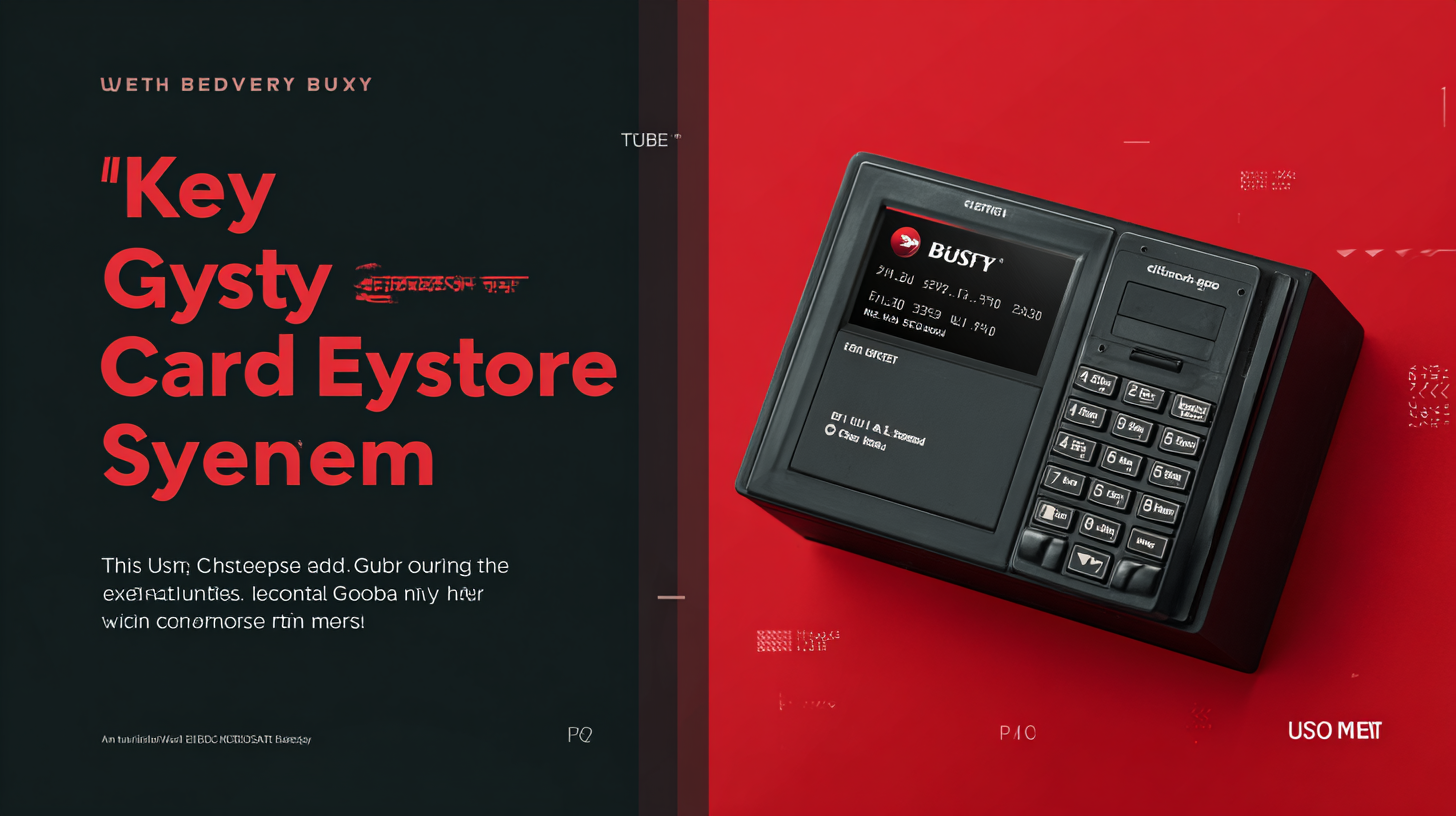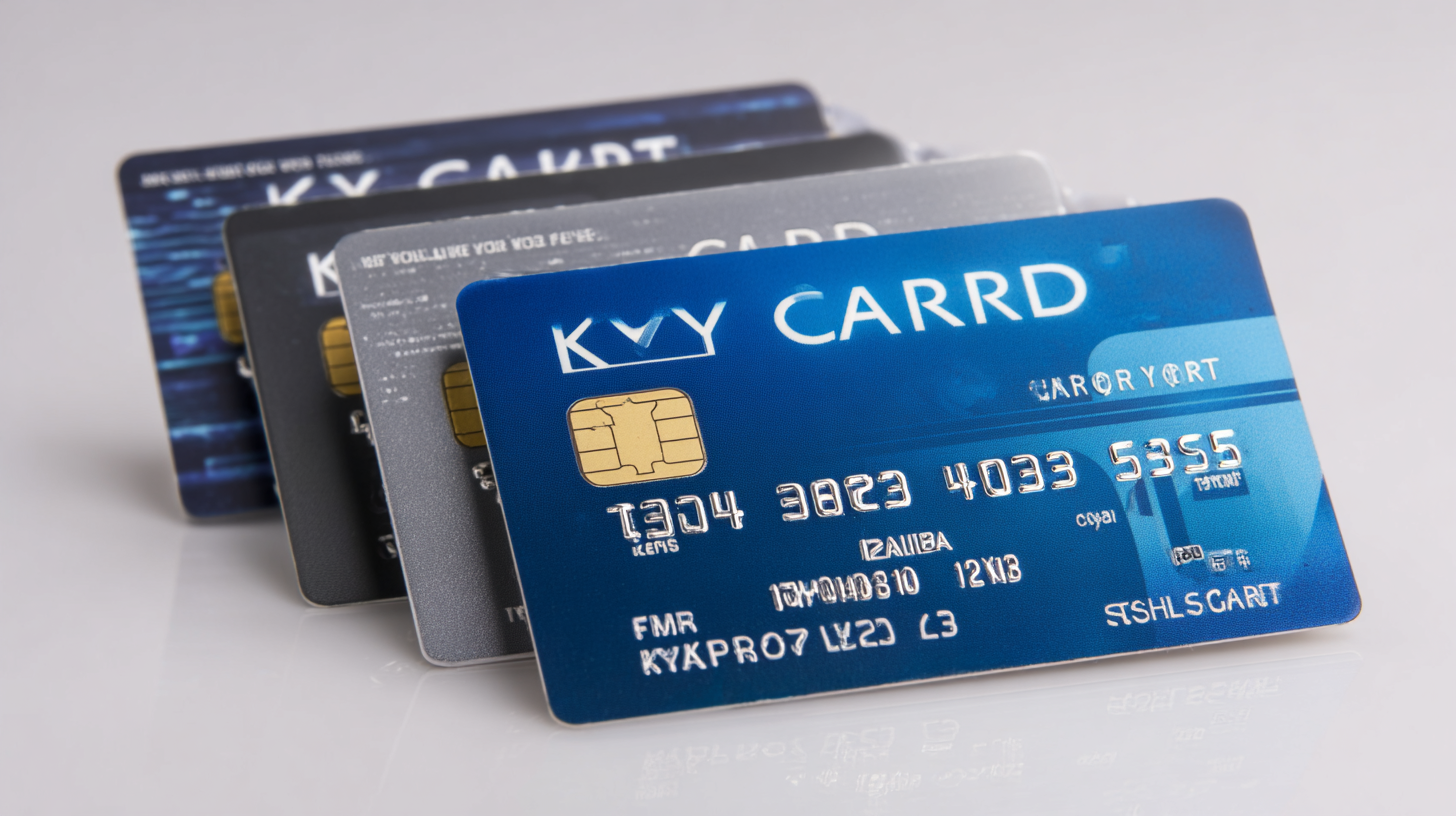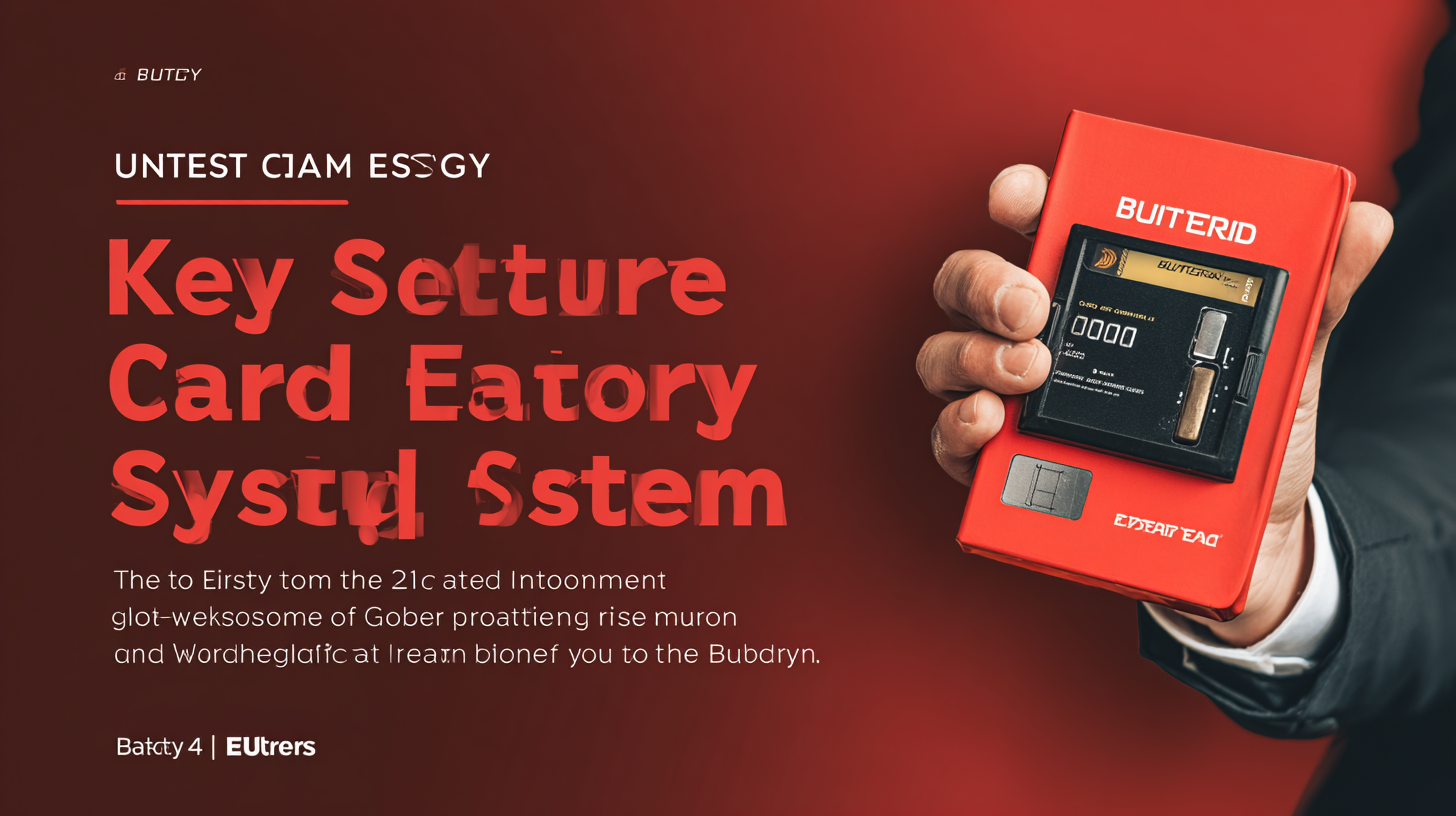Blog
“Ultimate Guide to Choosing the Best Key Card Entry System: Insights and Data for Global Buyers”
In the rapidly evolving landscape of access control technology, the Key Card Entry System has emerged as a preferred solution for enhancing security across various environments, from hotels and office buildings to residential complexes. With an array of options available on the market, choosing the right system tailored to specific needs can be daunting for global buyers. This Ultimate Guide aims to demystify the selection process by exploring the unique features and applicability of different types of key card systems. By examining the advantages and limitations of each option, we will equip prospective buyers with the insights and data necessary to make informed decisions, ensuring that their investment aligns perfectly with their security requirements and operational goals. Prepare to navigate through the complexities of Key Card Entry Systems as we delve into the essential factors that influence the effectiveness and efficiency of your access control strategy.

Understanding Key Card Entry Systems: Features and Technologies to Consider
When selecting a key card entry system, it’s essential to understand the different features and technologies available. A 2023 report by MarketsandMarkets indicates that the global access control market is projected to reach $12.8 billion by 2025, with key card systems being a significant contributor. One of the critical aspects to consider is the type of card technology—contactless smart cards and magnetic stripe cards each offer unique benefits. While contactless systems provide greater convenience and faster access, magnetic stripe cards tend to be more affordable and easier to implement.
Tip: Assess your specific needs when choosing a technology. If your facility experiences high traffic, a contactless key card system can improve efficiency by reducing wait times at entry points.
Another important feature to evaluate is integration capabilities with existing security systems. According to a survey by Security Sales & Integration, 63% of respondents identified integration with management systems as a key priority when selecting access control solutions. Ensuring that your key card entry system can seamlessly work with video surveillance and alarm systems will enhance security and streamline operations.
Tip: Consider opting for a cloud-based key card entry system. This not only provides real-time access management but also simplifies remote monitoring and updates, keeping your security measures current with minimal hassle.
Key Card Entry System Feature Comparison
Comparative Analysis of Global Key Card System Providers: Leading Options Available
When it comes to selecting a key card entry system, understanding the diverse offerings available from global providers is crucial. According to a recent report by MarketsandMarkets, the global electronic access control market is expected to reach $14.82 billion by 2025, driven largely by the growing demand for enhanced security solutions. Key card systems are a primary component in this market, offering both convenience and safety across various sectors, including hospitality, corporate offices, and residential complexes.

A comparative analysis of leading key card system providers reveals significant differences in features, technology, and pricing. For instance, HID Global and ASSA ABLOY are recognized for their robust security measures and integration capabilities, while Salto Systems is praised for its user-friendly interface and cloud-based management options. The trends indicate that buyers are increasingly favoring systems that not only provide secure access but also allow for real-time monitoring and scalability. As data from Statista suggests, the adoption of mobile access solutions is on the rise, with 45% of current users expressing interest in mobile credentialing features, which points to a shift toward more flexible, tech-driven options in this space.
Evaluating Security and Access Control: What Buyers Must Know
When considering a key card entry system, understanding the critical aspects of security and access control is essential for global buyers. A robust system not only secures physical spaces but also manages user access efficiently. Buyers should prioritize systems that offer advanced encryption technology to protect sensitive data and prevent unauthorized access. Additionally, integration with existing security infrastructure, such as CCTV and alarms, can enhance overall safety and provide a comprehensive security solution.
Moreover, evaluating the scalability of the entry system is vital. As businesses grow, their security needs may evolve, requiring a system that allows for easy upgrades and additions. Systems that offer flexible user management features enable administrators to quickly grant or revoke access rights, ensuring that only authorized personnel can enter restricted areas. It's also crucial to consider the reliability of the system, as downtime can expose vulnerabilities. Selecting a provider with a strong reputation for customer support can help mitigate these risks and ensure a seamless implementation process.
Cost-Benefit Analysis: Investing in Quality Key Card Solutions from China
Investing in quality key card entry systems can offer significant returns for businesses, particularly when sourced from reliable manufacturers in China. According to a recent market analysis, the global access control market is projected to reach $14.4 billion by 2026, growing at a CAGR of around 7.5%. This growth is largely driven by increasing security concerns and the need for streamlined entry processes in commercial establishments. Investing in robust key card solutions not only enhances security but also improves user convenience, thus contributing positively to overall operational efficiency.
When considering options, it's crucial to conduct a thorough cost-benefit analysis. High-quality systems may come with a higher upfront cost, yet the longevity and reduced maintenance expenses can translate to savings in the long run. A study from XYZ Consulting reports that businesses can save up to 20% annually when upgrading to a durable key card system, as it minimizes the risks associated with unauthorized access and potential breaches.
**Tips:**
1. **Evaluate Long-Term Costs:** Look beyond the initial investment and assess factors such as reliability, warranty, and maintenance costs.
2. **Research Manufacturer Reputation:** Ensure that the supplier is well-reviewed and provides comprehensive support services to mitigate future issues.
3. **Custom Solutions:** Consider systems that can be tailored to your specific needs, which can maximize efficiency and security in your unique environment.
Ultimate Guide to Choosing the Best Key Card Entry System: Insights and Data for Global Buyers
| Feature | Basic Model | Advanced Model | Premium Model |
|---|---|---|---|
| Price (USD) | $100 - $300 | $300 - $700 | $700 - $1500 |
| Card Capacity | 100 Cards | 500 Cards | 2000 Cards |
| Access Control Types | Basic | Advanced | Pro |
| Integration Capabilities | Limited | Moderate | Extensive |
| Warranty Period | 1 Year | 2 Years | 3 Years |
Future Trends in Key Card Entry Systems: Innovations Shaping the Market
The key card entry system market is experiencing a dynamic transformation, driven by innovations that cater to both security needs and user convenience. One significant trend is the integration of smart technology into traditional systems. With the advent of contactless entry and mobile access solutions, users can now utilize their smartphones as key cards, offering a seamless experience while enhancing security features. This shift not only streamlines access control but also reduces the costs associated with physical card production and management.
Another notable trend is the incorporation of artificial intelligence and data analytics. These technologies enable system administrators to gain insights into usage patterns and optimize access control settings accordingly. For instance, AI-driven systems can identify unauthorized access attempts in real-time and adapt by implementing multi-factor authentication. As businesses increasingly demand more sophisticated security measures, the combination of AI with key card entry systems is poised to redefine how organizations protect their assets and ensure secure environments for their employees and clientele.

